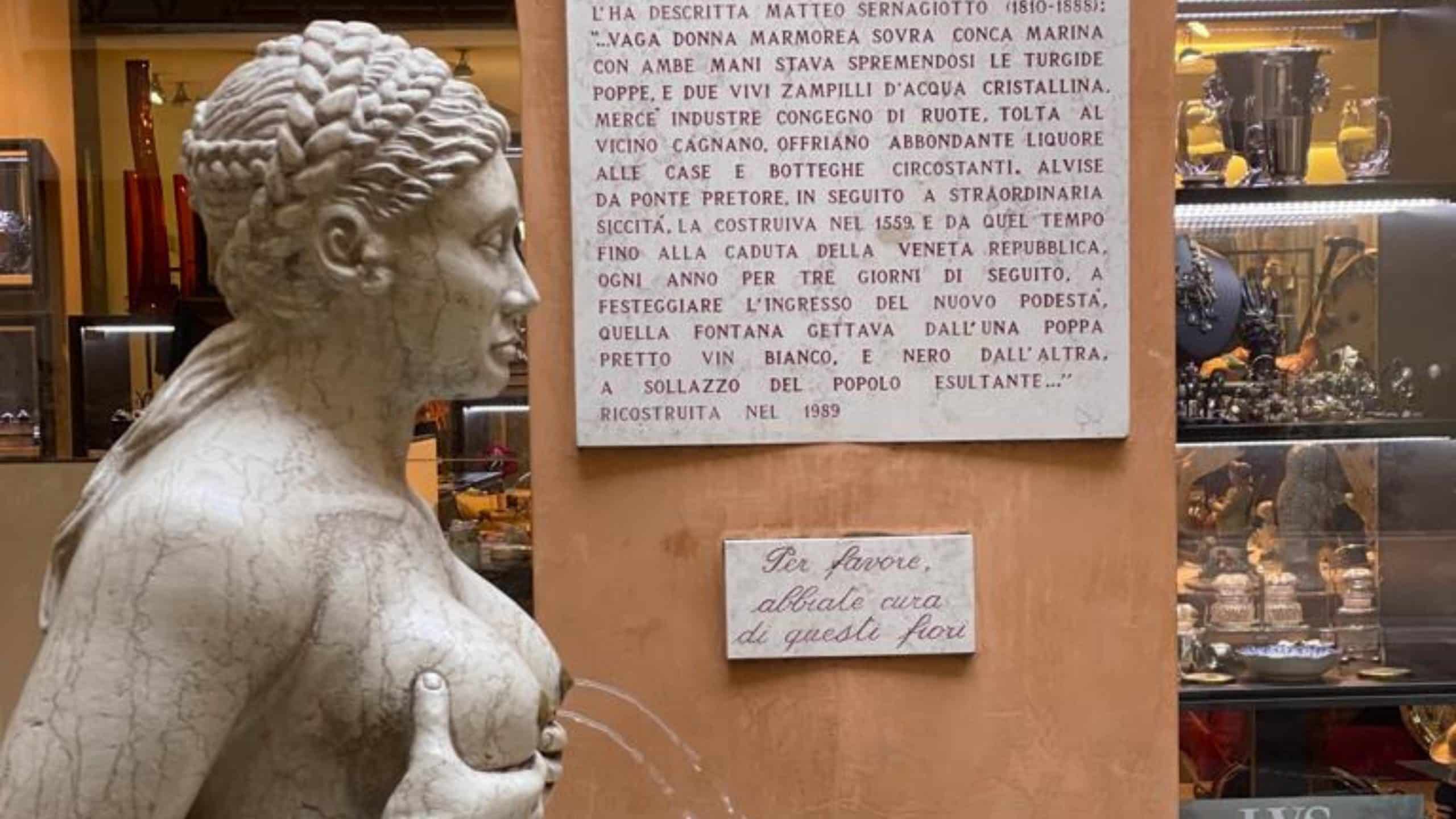The story of the Treviso fountain begins in 1559, during a period of terrible drought, when Alvise Da Ponte, then ruler of the Venetian Republic, ordered the construction of a unique statue in the world.
In the autumn of 2016, a news from Italy was making the rounds of the world, picked up by all the press agencies: an Italian town was inaugurating a fountain that worked 24 hours a day, seven days a week, and from which wine flowed instead of water, and the drink cost nothing. The fountain was installed in Ortona, Abruzzo, an Italian town located south of Rome, in a well-known wine-growing area.
The idea is not new, however, as such a fountain has existed in the Italian town of Treviso since the 16th century.
The story of the Treviso fountain begins in 1559, during a period of terrible drought, when Alvise Da Ponte, then ruler of the Venetian Republic, commissioned the construction of a unique statue. It was called and still is called Fantana cu Sani, because it depicts a woman with bare breasts, from whose nipples wine flowed.
During the Venetian Republic, until 1797, the statue was placed inside the Praetorian Palace, on Via Calmaggiore. Every year, to celebrate the election of the new ruler, for three days, white wine flowed from one side of the statue and red wine from the other. All citizens of Treviso could drink it for free.
Soon, however, Napoleon’s troops, who came to control the region militarily, saw the statue as a symbol of local power and wanted it gone. They vandalized it and for a long time the statue was considered lost. Then, the statue was found by a certain abbot Luigi Bailo, who housed it in the Casa da Noal Museum.
Today, visitors to Treviso can admire a copy of the statue, rebuilt in 1989 by Peruvian sculptor Miguel Miranda Quinones. It is located in the courtyard of the Zignoli Palace, accessible from the gallery connecting Calmaggiore to Piazzetta della Torre and Calle del Podesta. From the nipples of his breasts, however, red and white wine no longer flows, not even in the days leading up to the mayor’s election, but only fresh water, inside a shell-shaped basin, flanked by a plaque summarizing his history in words dictated in the 19th century by the Treviso doctor Matteo Sernagiotto.
The original vandalised by the French is now protected in the loggia under the Palazzo dei Trecento.
The fountain is still considered today by the locals a symbol of fertility, abundance and prosperity enjoyed by the town due to its proximity to the river Sile.
Legend has it that touching both breasts brings good luck to the bold, so the popularity of the statue, unchanged for generations, is understandable.






